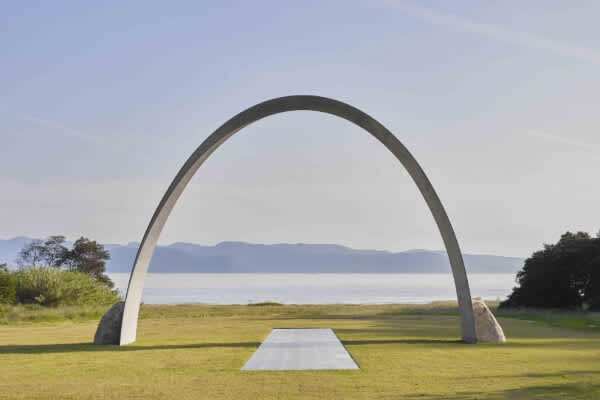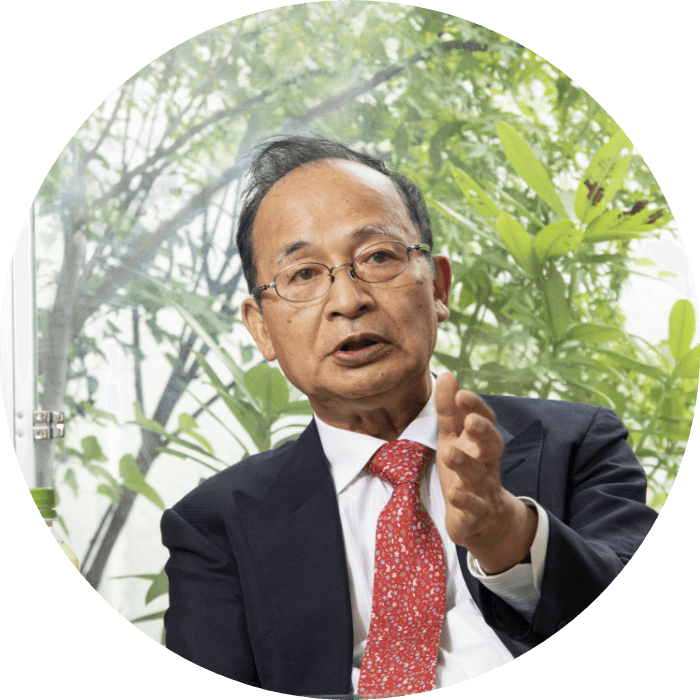A Glimpse Into Japan’s Flourishing Art Festival Scene with Art Director Fram Kitagawa
A recent wave of contemporary art festivals have been invigorating idyllic rural communities around Japan. Fram Kitagawa, general director of the iconic Echigo-Tsumari Art Triennale, gives a behind-the-scenes look into these unique celebrations of art and culture.
-
Fram Kitagawa
Founder, Art Director & Chairman of Art Front Gallery
Fram Kitagawa has been serving as the general director of the Echigo-Tsumari Art Triennale since its inception in 2000. He has also been involved with major art festivals such as the Setouchi Triennale, Northern Alps Art Festival, and Oku-Noto Triennale.
What inspired you to launch the Echigo-Tsumari Art Triennale?
This art festival takes place every three years in the Echigo-Tsumari area of Niigata, an area known for its harsh, snowy winters. We first launched it in 2000, in an effort to revitalize areas that were facing depopulation and natural disasters. Our mission was to showcase the area’s natural beauty and warm hospitality through the power of art. This sentiment was not just geared towards visitors, though—I wanted to remind the locals of how wonderful their hometowns are and help them regain their sense of pride about their culture and traditions.
I think that artists have a deep understanding of both the unique features and hardships of the regions they live in. Through their work, we can get new perspectives and forge a unique connection with the area. I personally believe that art is just like a baby. For example, in rural areas, children are raised and supported not just by their families, but by the neighboring community. Just like that, art may come from one creator, but you need the support of entire communities to keep it alive and thriving. That was one of the main philosophies behind this project.
It wasn’t all smooth sailing, however, At first, it was difficult getting acceptance from locals. Many older villagers were hesitant about welcoming so many unfamiliar faces into their territory for such a large-scale event. But after it was held a few times, I noticed that there was not only acceptance, but meaningful relationships being forged between the community and a young generation of artists and art enthusiasts.
Over the years, I’ve been pleased to see people from cities and even international visitors get involved in various aspects of this project. The number of visitors has also been steadily growing, with more than half a million people coming to our 2018 event. I hope for even more participation in the years to come.

Hoshitoge Terraced Rice Fields (Tokamachi-shi, Niigata)

Photo by Osamu Nakamura
What makes Echigo-Tsumari Art Triennale different from similar events abroad?
It is one of the very few art festivals that take place in a rural area. Most renowned events, like the Venice Biennale or Paris’s International Fair of Contemporary Art, take place in major cities. However, Echigo-Tsumari is set in an agricultural environment, where installations are set up by rice paddies, forests, rivers, and abandoned houses. The scenic natural beauty and slow-paced lifestyle in the area is a striking contrast to busy urban jungles like Tokyo.
We wanted to bring the rural landscape into the spotlight. Throughout history, it is the land, the climate, the flora, and fauna that has shaped the culture and art of each place. We wanted to place an emphasis on that deep-rooted relationship. So, visitors who come here can not only experience art, but they get a glimpse into agrarian lifestyles, enjoy delicious meals, soak in hot springs and just immerse themselves in a tranquil environment. Children tend get bored quickly in museums and art galleries, but here they can run around in open fields and physically interact with the art installations. This makes the event the kind of place you can visit with your family.
Through this project, people can see the appeal of living in the countryside. I personally don’t like living in the city—you don’t get greeted by passersby and there’s just too much sensory stimulation. Taking time to go back to our pastoral roots can remind us that we’re a part of nature.
Although the Triennale is held every three years, you can visit anytime to see the permanent exhibitions. For example, the Echigo-Tsumari area is home to an enormous flower sculpture by Yayoi Kusama called Tsumari in Bloom, as well as James Turrell’s House of Light.


Photo by Tsutomu Yamada

Tsumari in Bloom by Yayoi Kusama
Photo by Osamu Nakamura

Palimpsest: Pond of Sky, by Leandro Erlich
Photo by Keizo Kioku

The Last Class by Christian Boltanski+Jean Kalman
Photo by T.Kuratani
You were also involved in another notable art festival, the Setouchi Triennale. What makes it worth visiting?
Just like Echigo-Tsumari, the Setouchi Triennale began as an initiative to revitalize local communities. Naoshima, an island in the Seto Inland Sea, has long been known for its art and architecture by Tadao Ando. The organizers of the triennale wanted to take that concept a step further by encompassing more of the small islands nearby.
Of course, the event showcases many brilliant artworks by renowned and rising artists, but I think the best part about it is how it demonstrates the distinct characteristics of each island. Many of the art installations blend in with or draw attention to its surroundings, whether it’s the beautiful coastal views, the lush forests, and the serene pastoral landscapes. Even when the triennale is not taking place, you can visit the museums and permanent art spots throughout the region, featuring works of noteworthy artists such as Lee Ufan and Yayoi Kusama.

Oscar Oiwa + Shigeru Ban,Ogijima Pavilion,2022
Photo by Keizo Kioku

Lee Ufan ‘Porte vers l'infini’ (2019) , Lee Ufan Museum
Photo by Tadasu Yamamoto

Yayoi Kusama, Narcissus Garden, 1966/2022, Stainless steel spheres, Copyright of Yayoi Kusama
Photo by Masatomo MORIYAMA
curtsey of Benesse Art Site Naoshima
There are also plenty of other art events throughout Japan, such as the Aichi Triennale and Reborn-Art Festival in the Tohoku area, which was affected by the Great East Japan Earthquake in 2011. I think these events are worth visiting, not just for the art, but to see everything each region has to offer.

Kohei Nawa, White Deer (Oshika)
Photo by Yukihide Nakano
Courtesy of Reborn-Art Festival
Both the Setochi and the Echigo-Tsumari triannales have helped revive and draw attention to quiet countryside communities, enriching the lives of locals, artists, and art aficionados. They remind us that art is a spatial and immersive experience. It should not be savored on its own, but as an extension of the community. I believe that art has power. But what is even more powerful is how we share art.
Recommended article
-
Art & Design in Japan
Find out Art & Design in Japan. Japan's museums cover the whole artistic spectrum while its streets house structures from traditional to modern architecture
Learn More
-











